Bollywood 101: A FUN Guide to Indian Cinema
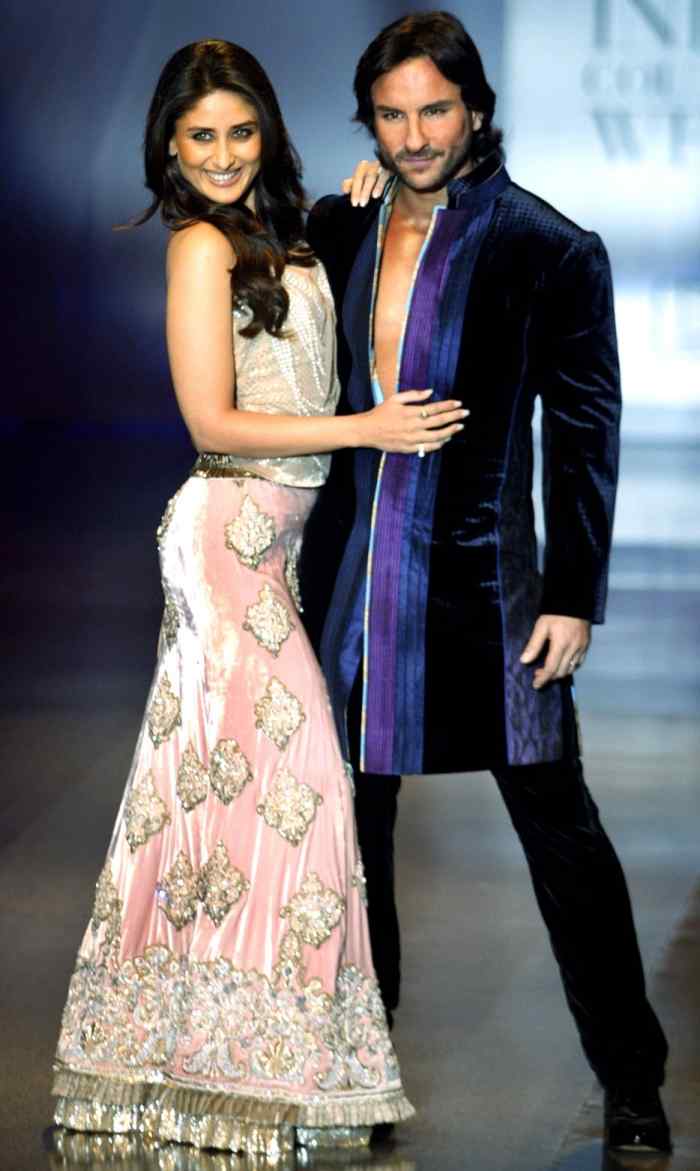
Since the 1930s, Indian cinema has had a long, illustrious history rivalling Hollywood. Raj Kapoor, director, producer and actor, can be seen as the Charlie Chaplin of Bollywood. In a newly independent democracy formed against British colonialism, Raj Kapoor’s movies provided a forum to promote patriotism. 1Mother India (1957) and later Jis Desh Mein Ganga Behti Hai (1960) meaning “the country that the Ganges flows in” broke all records. Mother India was made as a counterpoint against an American story that many Indians felt portrayed the cultural role of women in a negative light. 2 Celebrating its 60th anniversary this year, Mother India stands as a classic in Hindi cinema demonstrating the power of women in nation building.
One of Raj Kapoor’s most famous hits Shree 420 (1955), is a story of a young man who walks to Mumbai from his small town and becomes seduced by the evils of a big city, ultimately finding redemption and love. Raj Kapoor, among other directors, effectively tapped into feelings of patriotism for the mother country initiating a tradition that still stands strong today. On his journey to Mumbai, Kapoor’s character sings about rising globalization while promoting nationalism. By the way, if this song sounds vaguely familiar, it is featured in Deadpool (2016) during the first taxi scene.
Badass Bollywood
Superstars like Amitabh Bachan and Dharmendra gave rise to the “angry young man” motif present in Bollywood movies in the 1970s about stories of young people succumbing to a life of crime amidst the poverty of a post-colonial India. 3 Back in its day, Sholay (1975) was one of the most violent movies of its time (and spoiler alert) ends in one friend giving up his life so his buddy can find happiness with the woman he loves played by Dream Girl (1977) Hema Malini. Sholay provides an early example of the ultimate bromance before it was “a thing.”
As an interesting sideline, the real life romance of Dhamendra and Hema Malini, a renowned actress and dancer, culminated in marriage and is still going strong today. Like their partnership, Bollywood has always had its loyal, core audience nation wide. In terms of a global audience, from the 50s to the 80s Hindi films filtered through the Iron Curtain into parts of the USSR where Kapoor and his contemporaries enjoyed a quiet following. 4

Enter Karan Johar in the 1990s. Popularly known as KJo, the son of Yash Johar who owned one of the biggest production houses known for filming iconic love stories, wrote and directed Kuch Kuch Hota Hai (1998) when he was 24. Karan Johar favours using Archie comics as the basis for his love story triangles. 5 Two girls vie for the same boy in the tradition of Betty and Veronica fighting over Archie. In KKHH, a tomboy falls for her best friend in college but unfortunately, realizes her feelings too late as he becomes smitten by the uber-glamorous new girl.
KKHH is significant because Johar intentionally selected a wardrobe in Western styles with brand names, jeans and short skirts for most of the film, symbolizing the ultimate embracing of Western styles for Bollywood actors. The heroines have short hair for the first time ever!
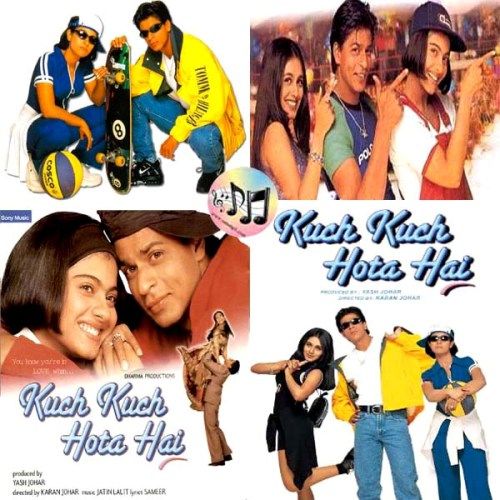
When the tomboy tries to get attention from the main character, she dresses in a failed attempt at Western sophistication and faces ridicule from her peers. Ultimately, when she meets her college friend years later when he is a widowed father, she has adopted a very glamorous but traditional Indian style of dressing. Prior to KKHH, no one had used Western clothing in Indian cinema. The saris and salwar kameezes the characters had worn in the past were the main reason that Bollywood movies had difficulty in gaining acceptance by non-resident Indian (NRIs) living abroad. After KKHH’s blockbuster success worldwide, Bollywood began to recognize the importance of fashion styles in movies and started to create Westernized clothing for the actors in an attempt to capture a global audience. In a way, KKHH symbolizes the journey of Bollywood. The hero represents NRI audiences who do not notice the heroine, Indian cinema, until she adopts a Westernized appearance.
Bodacious Bollywood
Kabhi Kushi Kabhi Gam (2001) is another KJo movie, but this time echoes NRIs’ feelings of nostalgia for family back in India. Variations on similar themes with a nationalistic focus are a further attempt to appeal to the Indian diaspora worldwide. KKKG also uses clothing to portray differences in Western and Eastern lifestyles and thought. Incidentally, the actress featured in the clip is Kareena Kapoor, the granddaughter of Raj Kapoor. She plays the role of the younger sister who adopts a more Western style of clothing but as she rediscovers her roots, finds wearing traditional Indian styles more compatible with her new found comfort in her Eastern identity.
Namastey London (2007) is also a movie about an NRI family dealing with clothing as a symbol for cultural identity issues. A new genre of Bollywood movies catering to NRIs was created through KJo’s efforts. Both KKHH and KKKG were the highest grossing films abroad of all time, breaking into the UK top ten films among other records, revealing how influential Western styles are in determining the acceptance of the Indian film industry by NRIs in the UK, US and Europe. 6
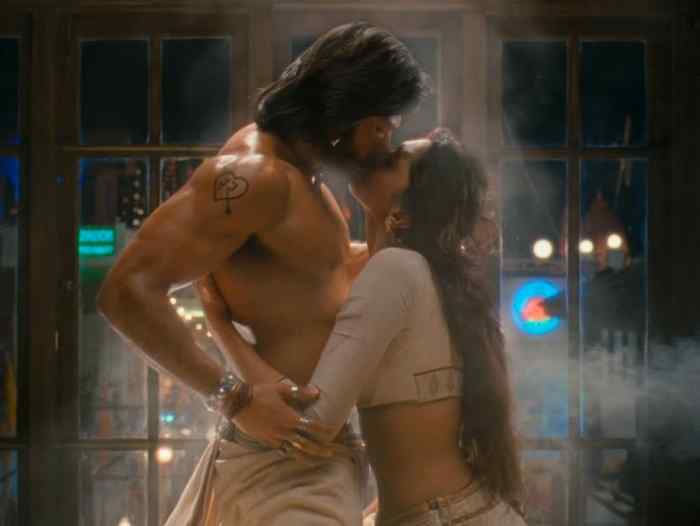
Today, Bollywood heroes sport six-pack abs and heroines rock a mix of Eastern and Western looks. As for KJo, he hosts a talk show called Koffee with Karan. Anyone interested, can view Youtube clips of his interviews with all the latest Bollywood stars. Cultivating an image of the new modern India, with provocative and controversial topics, KJo’s hilarious “Rapid Fire” round is a must see. Koffee with Karan is the first show in English with phenomenal ratings success in India and is transmitted worldwide. 7
Beguiling Bollywood
But dismissing Bollywood as being just about clothing and superficial appearances would be a mistake. Promoting nationalism has remained a core Bollywood tradition in movies such as Swades (2004), meaning “we the people,” about an NRI who works at NASA and has to come home to care for his now elderly nanny. On the way home, he falls in love with a childhood friend from his hometown. Although he returns back to the US, the protagonist cannot escape his longing to return home and help his village. The song “Yeh Jo Des Hai Tera” juxtaposes the images of the advanced part of the world endeavouring to enter space while people in a village do not have access to clean water and electricity. The hero is torn between his humanitarian ambitions at NASA and the Indian villagers who need him back home.
More recently, Airlift (2016) a true story about an affluent NRI who helps evacuate Indians during the 1990 Kuwaiti crisis, promotes the motherland with one of the final lines in the movie from the protagonist saying, “I will never again ask what India has done for me.” For NRIs, Bollywood can be a great segue into reconnecting with their culture, learning about global history and exploring issues Indians face today with a complexity and sensitivity usually not found in Western media’s frequent portrayal of cultural stereotypes.
Bigotry and Bollywood
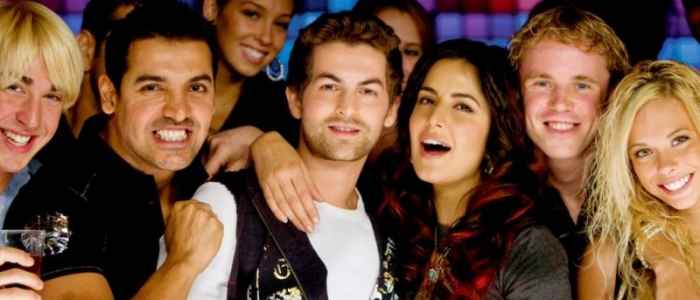
One recurrent theme in Bollywood movies after 9/11 is to explore the increasing acts of racism against the Indian diaspora worldwide as communities struggle to deal with insecurity regarding foreigners as neighbours. New York (2009) portrays three college friends where one student spirals down into becoming a terrorist ironically enough after spending months in a detention centre after being accused of helping to make a bomb. In My Name is Khan (2010) life in the US is shown as challenging for Muslims, especially Muslim children.
In Fanaa (2006) and Kurbaan (2009), the heroines unwittingly marry senior level terrorists who carry out horrific acts using married life as a cover. But following in the traditions of great romances, the characters develop as they find themselves intertwined with global issues, family loyalty and love. The often ignored topic by the media of how life has changed for NRIs worldwide is dealt with in quite a few Bollywood movies, giving voice to the very real issue of personal safety from law enforcement concerned with homeland security. Bollywood offers an alternative perspective to traditional Hollywood portrayals of East/West conflicts in NRIs’ lives.
Beautiful Bollywood
Bollywood is all that, plus it’s fun! For those wanting to experience Bollywood for the first time, there are movies like Bang Bang (2014) which is based on the Tom Cruise/Cameron Diaz hit Knight and Day (2010). In the clip below, watch out for the Michael Jackson tribute half way through.
For historical drama lovers, Devdas (2002), is a movie that depicts how outwardly men have great power in society. Yet, inwardly they may lack the courage to stand up to corruption. Devdas demonstrates how when women make decisions rooted in justice and love, they can earn a greater degree of moral authority. Bajirao Mastani (2015) portrays a famous love triangle set in the 18th century. Of course, it is a doomed love, destined to result in the tragic deaths of the hero and heroine. But the cinematography is beautiful, filled with elegant and ethereal images. Sanjay Leela Bansali, the director of both Devdas and Bajirao Mastani, also wrote the musical score for his latest masterpiece. 8
Bollywood also has a whole host of sports and female empowerment flicks. Aamir Khan’s true story Dangal (December 2016) is about a man who trains his daughters to wrestle, going on to see them win the gold and silver medals at the 2010 Commonwealth Games. In order to promote the status of women within the film industry, Shah Rukh Khan pledged in 2013, to have his name appear after the heroine’s name in the movie credits. 9 Actors in Bollywood have become important activists for the status of women in India and around the world, doing their part to alleviate oppression based on gender.
Lineages and Legacies

One major point of note is the legendary lineage of many Bollywood actors. Raj Kapoor’s granddaughters, like Kareena, have made their own mark in the Hindi film industry as part of their great familial tradition. But even in the 1970s, Amitabh Bachan had a family connection with a famous poet as a father. Bachan’s father was one of the first Indians to receive a doctorate in English literature from Cambridge in the 1950s. 10
Kareena Kapoor’s husband, Saif Ali Khan, had parents who were the Posh and David Beckham of their day. His father was the captain of the Indian cricket team, nicknamed Tiger Pataudi. After losing one eye from a cricketing accident, he impressively went on to build a successful career in cricket, winning several notable titles, among them Cricketer of the Year more than once. Besides all that, he was also a Nawab, similar to the role of a Duke, for the state of Bhopal. Gone are the days of collecting taxes on the title, but Saif Ali Khan recently inherited the symbolic title of the 10th Nawab.
On his mother’s side, Sharmila Tagore, Saif Ali Khan can lay claim to being the grandson of Rabindranath Tagore who won the Nobel Prize for Literature in 1913. Educated in England, would he not make a great James Bond? In fact, so many Bollywood actors today have received a foreign education in either the US or England. Soha Ali Khan, Saif Ali Khan’s sister, even has a master’s degree in international relations from the London School of Economics. Currently, she has returned to India to pursue an acting career.
Not just in academics but in sports as well, Bollywood actors have made their marks. Deepika Padukone, the actress in the Bajirao Mastani clip above, played badminton competitively in the tradition of her father, an international gold medal badminton player. She can be found in xXx: Return of Xander Cage (2017). Amongst the women, there are several beauty contest winners, with India holding the second highest number of Miss World titles. In 2000, Dia Mirza won Miss Asia Pacific, Lara Dutta won Miss Universe and Priyanka Chopra won Miss World. Today, many beauty pageant winners can boast of careers as successful actresses. Priyanka Chopra can be seen weekly in Quantico and the upcoming Baywatch (2017) remake.
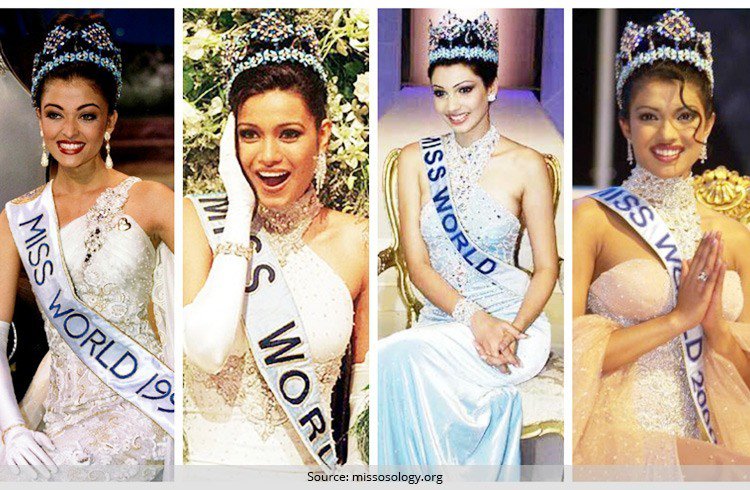
With entire production houses behind them, Bollywood actors can make effective global ambassadors for their craft. Given that so many Bollywood actors have international experience either through academics, athletics and beauty competitions, they are in an unique position to function as citizens of the world.
Beyond Bollywood
With the success of the new crop of actors in Bollywood outside the film industry it will be interesting to see what direction Indian cinema takes in the 21st century. Bollywood may be able to leverage the existing infrastructure to attract cost effective Hollywood movie production. Disney, FOX, and Sony currently all have partnerships with Bollywood studios in India while retaining creative control. 11 However, given the rhetoric on keeping jobs within America, it remains to be seen how long the partnerships between Eastern and Western corporations will last.
One positive step in the direction of building bridges with the global community is the International India Film Awards (IIFA) taking place at an international locale every year. The global exposure to the Indian film industry is enjoying world wide support from NRIs. Actors in Bollywood have not just received awards from the international community, but confer awards at IIFA. At the 2014 IIFA in Miami, John Travolta was honoured with the award for Outstanding Achievement in International Cinema from the Indian film industry. Travolta’s legendary dance moves have influenced today’s greatest Bollywood dancers such as Hrithik Roshan with his gravity defying moves in the Bang Bang clip.
For those who enjoy a visual feast, there is plenty of eye candy with the bold, bodacious and beautiful actors and actresses who act, sing and dance for a global audience. But Bollywood is really a haven for movie goers who love escapism. And is that not what going to the movies is about? So consider this an invitation to come away and escape.
Since the 1990s, Bollywood has captured the hearts of NRIs building on their national fan base. A growing number of contemporary films examine modern day romance in the context of NRI children who have grown up abroad. Movie topics range from the comedy Golmaal Returns (2008) about a woman obsessed with soap operas to Krissh (2006) and Krissh 3 (2013) about the first Indian superhero.
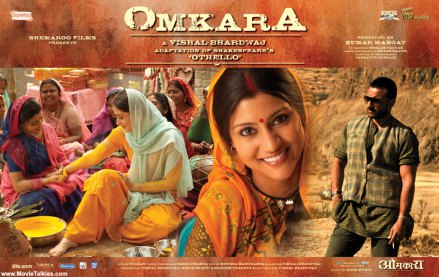
For moviegoers with a taste for literature, look for the Shakespearean adaptations, from Angoor (1981) to the more recent Haider (2014) based on The Comedy of Errors and Hamlet respectively. Omkara (2006) a remake of Othello, impressively won over 15 international awards with the multi-talented director composing the songs for the movie. 12
Bollywood has something for everyone: action, creative expression and romance. There are themes of nationalism, cultural identity and social commentaries on gender and race to be found as nuggets embedded in the lavish landscape of Indian cinema. In any case, Bollywood remains an artistic force to be reckoned with worldwide. As Raj Kapoor musically prophesied back in the 1930s,
My shoes are Japanese
These pants are British
I have a red Russian hat on my head
But still my heart is Indian. 13
In the same way, Bollywood movies may look a little different today than in the 1950s. The actors sport Western clothing and hairstyles. The settings are international, even filming in rarely seen countries onscreen such as Bulgaria in Dilwale (2015). The genres have evolved to include the experiences of Indians and NRIs alike, to the point some have criticized Bollywood for becoming too sexually explicit and Westernized. Yet, audiences around the world may well find the latest offerings from Bollywood more appealing than ever before if they give it a chance. All a viewer needs is an appreciation for Eastern traditions.
Can Bollywood Bridge the East/West Divide?
For some movie buffs, Indian cinema may challenge traditional Western stereotypes which could be unpalatable to some viewers. Nationalism as one of Bollywood’s core themes might have to be compromised to win over these audiences. Unless producers like Karan Johar, who effectively utilized clothing and nostalgia to win over NRIs, can find a way to get a global audience to buy into a more modern image of Indian cinema, it is unlikely that Bollywood would be able to crack the American/Western movie market. Even Jackie Chan lamented that his Hollywood movies failed in Asia and his Asian flicks did not even hit the Western market. 14
Similarly Slumdog Millionaire (2008), lauded in the West, was detested by many Indians. Firstly, SM dissed Bachan by portraying him as a superstar indifferent to hero worship from a poverty stricken boy. Secondly, as Amitabh Bachan famously tweeted, “if SM projects India as [a] third-world, dirty, underbelly developing nation and causes pain and disgust among nationalists and patriots, let it be known that a murky underbelly exists and thrives even in the most developed nations.” 15 It would be nice when Hollywood takes over screenplays with Indian content to not always set up every story against the backdrop of extreme poverty. According to Hollywood, nothing of interest ever happens to middle class Indians. Lion (2017), gets it mostly right. Namesake (2006) did it even better. But a long history of negative portrayals of India and Indians have not endeared Hollywood to Bollywood.
Nonetheless, Bollywood has the vision, interest and purpose in terms of reaching a global audience. It will be worth watching to see how an international audience is reached and could prove to be a model for business, political and educational leaders to follow, if successful. For now, there are enough NRIs worldwide to keep Bollywood in business. Will Raj Kapoor’s sentiments prove true for the future? Will the heartbeat of Bollywood still remain Indian? Moviegoers will have to judge for themselves.
This article is dedicated to everyone who works in Bollywood, from the chai wallah, to the mega stars and their families. Thank you for making being Indian cool, even after 9/11 and giving NRIs a voice. Hopefully, global audiences will also find Bollywood entertaining and empowering.
Works Cited
- https://mrandmrs55.com/2014/08/15/mera-joota-hai-japani-lyrics-and-translation-lets-learn-urdu-hindi/ ↩
- http://www.btchflcks.com/2015/03/mother-india-woman-pillar-of-the-nation.html#.WGq5v7HMxE4 ↩
- https://www.mpib-berlin.mpg.de/en/research/history-of-emotions/projects/emotions-and-the-body/angry-young-man-in-indian-cinema-1970-90 ↩
- http://calvertjournal.com/articles/show/4569/bollywood-affair-indian-cinema-USSR-raj-kapoor-nargis ↩
- https://www.thequint.com/entertainment/2015/05/05/what-archie-comics-unleashed-in-bollywood ↩
- Schaefer, D. & Karan, K. (2013). The Global Power of Popular Hindi Cinema. Routledge, NY. ↩
- http://www.india.com/topic/koffee-with-karan/ ↩
- http://indianexpress.com/article/entertainment/entertainment-others/actresses-name-should-appear-first-on-film-credit-rolls-says-srk/ ↩
- https://www.quora.com/How-is-Sanjay-Leela-Bhansali-able-to-compose-such-beautiful-music ↩
- http://www.diverse.cam.ac.uk/stories/bachchan/ ↩
- https://www.ft.com/content/735cc752-00c4-11e1-8590-00144feabdc0 ↩
- http://www.indiatimes.com/entertainment/bollywood/9-years-after-its-release-we-look-back-at-why-‘omkara’-was-beyond-genius-243481.html ↩
- http://www.filmyquotes.com/songs/1195 ↩
- http://www.latimes.com/entertainment/movies/la-ca-mn-jackie-chan-20150823-story.html ↩
- https://www.quora.com/Why-do-some-people-hate-Slumdog-Millionaire ↩
What do you think? Leave a comment.











Really want to get into Bollywood so this came at the right time. 🙂
Traditionally speaking, Bollywood movies were manufactured for a very specific kind of audience; the poor and destitute or more specifically those whose lack of English relegated them into a new social and economic class, this why they are outlandish, garish, and centre around love triangles. They are and were pure escapism for those less fortunate, and this legacy remains even today.
i recommend ‘3 idiots’. Comedy with great lessons about education and life.
Thank you for an educating and entertaining overview of some Bollywood films and how they pertain to political, social and economic structures.
Much better would be to ignore Bollywood and focus on Mollywood (Malayalam films , from Kerala) generally considered to be at the cutting edge of Indian cinema today . Also Kollywood (Tamil films) are great. The Mr Tamil Nadu bodybuilder competition scene at the start of Vikram’s recent film ‘I ‘ is an absolute classic…
Hi Stephane,
Agreed about the multilingual movies in Indian cinema. My mother tongue is Telegu as well as Urdu, so I grew up watching South Indian cinema.
The person who suggested this topic was asking about Bollywood in relation to Hollywood and the respective markets. I wanted to respond to this question and stay on topic so did not look at all the languages in India due to space constraints.
It would be great though if you wrote a follow up article on the variety of Indian cinema. I would love to read about it.
great guide!
I watched a bizarre Indian movie called ‘Koi… Mil Gaya’ about a teenager who is born with the mental age of a child after his Mother is involved in a traffic accident caused by a U.F.O, falls in love with a girl, befriends a pudgy blue alien, and takes part in a basketball game in which the pudgy blue alien imbues him with superhuman powers so that he wins the basketball game and the love of his sweetheart.
Maybe the sort of movie that’s better appreciated with a spliff or two.
Hi PaRTI,
The sequel to Koi Mil Gaya is Krissh and Krissh 3, very similar to the X-men movies, especially Krissh 3. Koi Mil Gaya has the distinction of being the first Bollywood sic-fi movie.
The second one was Ra.One which is in 3-D. If you have an interest in sci-fi, these would be the movies to watch.
Without at spliff!
Good article. As with Hollywood, heaps of dross, but the best is really very good.
I think the classics of Indian cinema need to be studied just as “Casablanca” , “Chinatown” and “La Vita e Bella” are studied today.
Indian cinema has influenced other cultures, in particular Egyptian cinema of the 1940s and 1950s.
Interesting! Would you have some specific movies you could recommend? I would be interested in following up on this?
I am an Indian and I approve this article!
What about regional films, especially from the South? Tamil films have often been copied by Bollywood and there songs sung in Hindi too.
The Bengali language has many art movies and very talented directors and actors. They stand above most of the other regional works.
Absolutely!!! I would love it if someone would use my article to springboard writing a more nuanced article about multilingual films in India. I want to write about Tagore but am concerned about doing justice to him.
Maybe you could go for it. Tagore’s short stories have been filmed for Netflix.
Totally. Indian films does not imply Bollywood films. There are regional films which are sometime far better than Bollywood films. For instance, films by Satyajit Ray, Mrinal Sen, Ritwik Ghatak, Adoor Gopalakrishnan, John Abraham are great stuff.
I do not think that most people even realize how multilingual Indian cinema is in terms of the diversity in the Indian audience. It would be great if someone could make a short list or even prepare a list with Hindi films that are dubbed.
Excellent accessible set of resources – this will keep me busy for a while. I love Bollywood.
if you want most romantic movies in bollywood……
1. ek duje ke liye.
2. devdas
For people who wish to get into bollywood, try “Black” ,”Lagaan”,”Bajrangi bhaijaan “,” Jodha Akbar”and “swades “.
Great suggestions!
A great Bollywood film has something of the Greek tragedy about it- I’m thinking of the underrated Haan Maine Bhi Piyaar Kiya amongst others. I
I like Baazigar.
I remember watching and loving Amar Akhar Anthony 30 years ago – a classic of its kind, though not a great film.
AAA is a classic. I watched it 3 times as a kid with my mom and dad.
if you love Indian culture and India then these Bollywood movies are must watch:
* Jab We Met
* Hum Dil De Chuke Sanam
* Humpty Sharma ke Dulhaniya
I loved Kareena and Shahid in JWM. Also Alia in HSKD. The actresses are really taking off and making their mark, so I am happy about supporting such a talented group of women. Good for them! It is nice to women getting opportunities to showcase their amazing acting and dancing skills and being recognized for it.
I fell in love with SRK when i was 12 watching Dilwale Dulhania Le Jayenge . When ever i suggest the movie to my friends they are all starting to fall in love with the movie and begin to watch other movies as well. I am such a big fan of srk my then fiance (now husband) took me to europe and mimic every single scene in DDLJ and then proposed.
Wow! That is very romantic. I am an SRK fan as well (as I am sure you get from my article). I think his collaboration with KJo and Kajol really helped catapult the Indian film industry to world wide proportions.
SRK is not just an actor but very intentional about the film business. I guess his background in Economics helps. He is probably the most well-known movie star on the planet.
Good selection of Bollywood info!
i m big fan of salman khan and amir khan.
Aamir and Salman are geniuses in terms of the types of movies they make. They cover topics that were not covered in the past and I think they have done a lot to push Bollywood to make movies that would not have been made in the past. They built on their appeal to create movies outside the traditional box. While the traditional box is still nice sometimes, it is great that audiences have become more accepting of non-traditional topics.
Pretty much how I feel. Pretty amazing in their own way.
Have you watched Rang De Basanti? It’s a film that accurately portrays the dichotomy between breakaway Western ideals and the innate desire to remain Indian at heart that affects many youngsters in the nation today. Having the story of India’s freedom fighters juxtaposed with the ever increasing awareness of the modern day youngsters to their nations issues is excellent writing, and having a foreign characters perspective enables it to be scathingly observant without appearing self depreciating ot ignorant.
Thanks for the recommendation. I will be sure to check it out.
I personally think all Shahrukh Khan movies are hyped!
I really liked how you managed to cover so many aspects of the Bollywood circus. It is also interesting to see how so many Indian works and actors are finding recognition in Hollywood. Special mentions to ‘Shaun of the Dead’ (where a Hindi song plays on the radio at the start of the zombie outbreak) and ‘Inside Man'(‘Chaiyya Chaiyya’ is used in both the opening and closing credits)
Thanks!
As SRK says in Don 2, “We are everywhere.”
i like saif ali khan one movie RACE 2
I love Race 2.
Bollywood films are very interesting. The music can be very catchy as well as the dancing which is very beautiful.
Interesting article.
Bollywood has captured my heart since I had my first view in one of their movies Three Idiots. Movies are full of vigor with its captivating music ideal for everyone.
I clicked this article so fast as soon as I saw “bollywood” lol, I love it!
Interesting analysis of themes!
Thanks! My own personal take on a subject I love.
I love bollywood movies, they produce awesome movies
Thanks for this!!! I have never watched any Bollywood before and this definitely inspired me to
Music to my ears.
Maybe you could check out the movies on Netflix. There is bound to be a topic of interest to you. If you let me know what genre you prefer I would be happy to suggest a few potentials.
Loved it, insightful! 😀
Thanks for this most informative piece! I knew some about Bollywood film, but that all that much, and I like how you gave a historical context for Bollywood, something most who discuss Indian cinema neglect.
Hi Allie,
Bollywood has changed a lot. So many movies are being made today that would never have been made in the past. I hope, like yourself, people give Bollywood a first or even second look. Who know? Maybe we all have more in common than we think.
Great article, I’ve grown up so closely with Hindi film so it’s interesting to view it from a novice perspective.
Hi Jumana,
LOL!!! Thanks for thinking I am a novice. You made my day : )
I have been watching Bollywood for 45 years. How long have you been into it?
This is a fascinating article to read having never looked to far into Bollywood films. The style and structure of them is really quite incredible. This has certainly inspired me to look more into Bollywood films to get a greater grasp on the whole culture surrounding it.
Hi Callum,
I hope you enjoy it as much as I do. : )
I think people in the west neglect to realize just how huge Bollywood is as an industry, and the high acclaim achieved by many Indian movies – great article!
Hi Noor,
Thank you! I hope I did Bollywood justice.
Agreed 100% that Bollywood deserves more credit than it receives. Here is hoping that will change.
The amount of hard work that goes into every movie is incredible.
More relevant it seems ,India a top order film industry.
Absolutely fascinating read, great use of youtube links to add a visual element to your text.
I learnt last year that Bollywood films have been hugely influential in developing the Nigerian film industry. A very surprising connection at first but Bollywood speaks to a Nigerian market more than Hollywood.
Both cultures are former commonwealth nations and have and anxiety towards the english language as it is symbolic of upperclass citizenship. There is also a growing rift between love marriages and arranged marriages in younger generations. Bollywood films address both these issues whilst Hollywood doesn’t.
As you have astutely pointed out formerly colonized countries do have a shared post colonial experience that does encourage common themes. Be interesting if you wrote an article on Bollywood and Nollywood.
As for marriage, always a fascinating topic, there is a great Indian serial called “Love Marriage, Arranged Marriage” that ended last year. Highly recommend if interested in that topic. And who isn’t?
Thanks Munjeera, for this insightful, witty, and well-written article. It might give me courage to go to the one multiplex in my city that plays Bollywood movies and watch one someday.
Hi Ben,
Go for it!
I was fortunate to work on ‘The Black Prince’ (due for release in July) a couple of years ago and it was a great experience. The Indian crew were very much the work-hard-play-hard kind and although we worked very late into the night on several occasions, even we simple bit part actors were treated as professionals (which has not been the case on certain Hollywood movies I’ve worked on). I had my own dressing room and my own hair and make-up crew. The food was excellent and loads of it. Still, dancing the waltz for hours on end can be somewhat tiring on the feet! I’d gladly work on a Bollywood production again.
The most recent Indian film production I’ve seen and thoroughly enjoyed is ‘P.K.’ (2014), a satirical science fiction comedy directed Rajkumar Hirani. Great fun and some fantastic song and dance sequences. Well worth watching for anyone, especially those who don’t like sci-fi.
Thanks for the insider insight. This article was dedicated to you all.
BTW, you have great punctuation so I am guessing you may be a writer too, as well as a dancer, yes?
I look forward to watching “The Black Prince.”
Thank for the feedback, Munjeera and the compliments. I’m a little bit of everything – a struggling actor, writer, ‘wannabe’ blues guitarist, one time website designer, artist, a fair to middling dancer (but only when I’m paid to dance!) and a pretty good cook. Yes, I too am looking forward to ‘The Black Prince’, even if only to see if I get my moment in front of the camera (I play a Victorian interior designer). For some reason I keep getting cast in period roles. Oh well, if there’s a pay cheque in it then I’m game!
You might like to know that the Windsor Castle scenes in ‘Black Prince’ were actually filmed at the Althorp Estate, near Northampton and Eastnor Castle, near Ledbury (what we might term a Victorian ‘reimagining’ of the original castle).
I could tell a few naughty tales about Jason Flemyng, but this is probably not the right arena for gossip LOL.
Anyway, all that aside, thanks again for your article. Much appreciated.
Maybe you could write an article on “The Black Prince.”
Apologies for the (very) late reply. I’ll look into that subject later – perhaps an inside view on the making of the film combined with a study of the subject matter. Thanks for the idea 🙂
Your article was so informative. I really feel that the songs add a unique flavour. They make everything – the shifts in mood, the emotions of the characters – more vivid.
Agreed 101%. I love the music. The lyrics are unbelievably romantic. The instrument sounds are exotic. Even if someone does not understand the language, the music really touches the soul to transcend across language.
There are some songs where I did not even know the lyrics at first and learning what the words meant added even more depth.
A concise article that introduced me to a brief history of Bollywood! There are always so many layers to a film and learning about the details in articles like these makes me appreciate then even more.
You do highlight an interesting tension in the Bollywood world between East and West. It will be interesting to see how this develops in the next years and decades.
There seems to be a trend in having diverse ensemble casts.
Omkara is so good